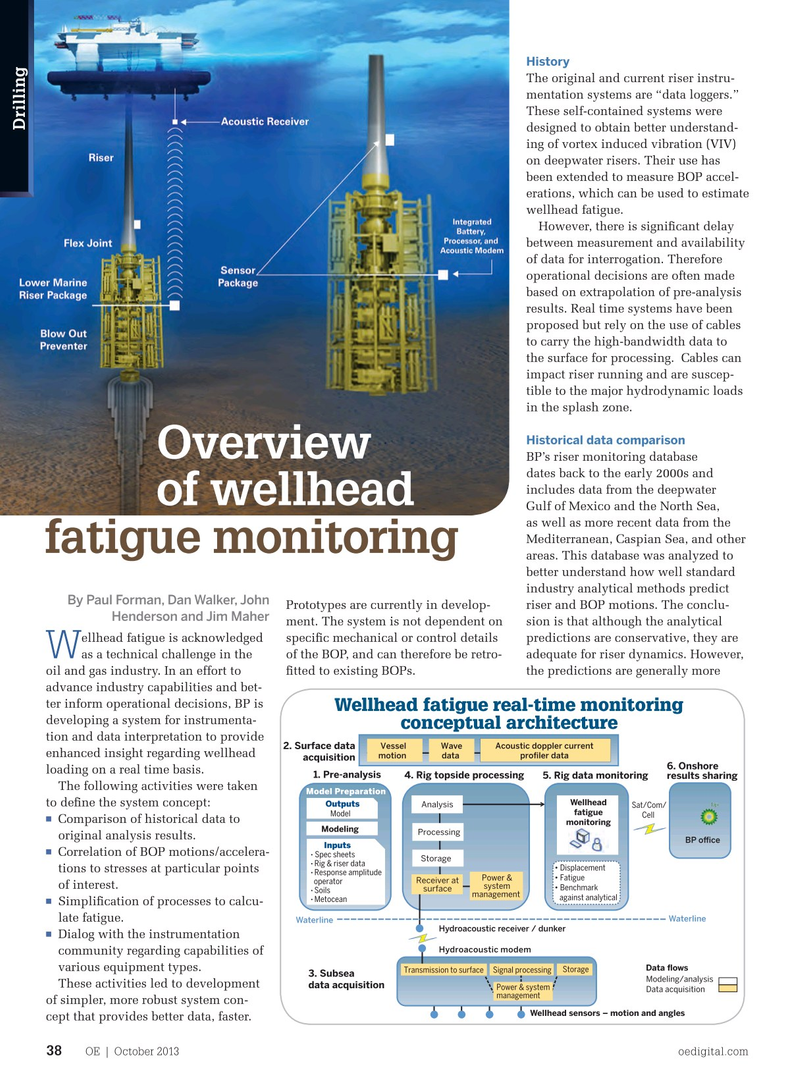
Page 36: of Offshore Engineer Magazine (Oct/Nov 2013)
Read this page in Pdf, Flash or Html5 edition of Oct/Nov 2013 Offshore Engineer Magazine
History
The original and current riser instru- mentation systems are “data loggers.”
These self-contained systems were
Drilling designed to obtain better understand- ing of vortex induced vibration (VIV) on deepwater risers. Their use has been extended to measure BOP accel- erations, which can be used to estimate wellhead fatigue.
However, there is signifcant delay between measurement and availability of data for interrogation. Therefore operational decisions are often made based on extrapolation of pre-analysis results. Real time systems have been proposed but rely on the use of cables to carry the high-bandwidth data to the surface for processing. Cables can impact riser running and are suscep- tible to the major hydrodynamic loads in the splash zone.
Historical data comparison
Overview
BP’s riser monitoring database dates back to the early 2000s and includes data from the deepwater of wellhead
Gulf of Mexico and the North Sea, as well as more recent data from the
Mediterranean, Caspian Sea, and other fatigue monitoring areas. This database was analyzed to better understand how well standard industry analytical methods predict
By Paul Forman, Dan Walker, John
Prototypes are currently in develop- riser and BOP motions. The conclu-
Henderson and Jim Maher ment. The system is not dependent on sion is that although the analytical ellhead fatigue is acknowledged specifc mechanical or control details predictions are conservative, they are as a technical challenge in the of the BOP, and can therefore be retro- adequate for riser dynamics. However,
W oil and gas industry. In an effort to ftted to existing BOPs. the predictions are generally more advance industry capabilities and bet- ter inform operational decisions, BP is
Wellhead fatigue real-time monitoring developing a system for instrumenta- conceptual architecture tion and data interpretation to provide
Vessel Wave Acoustic doppler current 2. Surface data enhanced insight regarding wellhead motion data pro?ler data acquisition 6. Onshore loading on a real time basis.
1. Pre-analysis 4. Rig topside processing 5. Rig data monitoring results sharing
The following activities were taken
Model Preparation
Wellhead to defne the system concept:
Outputs Analysis
Sat/Com/ fatigue
Model
Cell ¦¦
Comparison of historical data to monitoring
Modeling
Processing original analysis results.
BP o

 35
35

 37
37